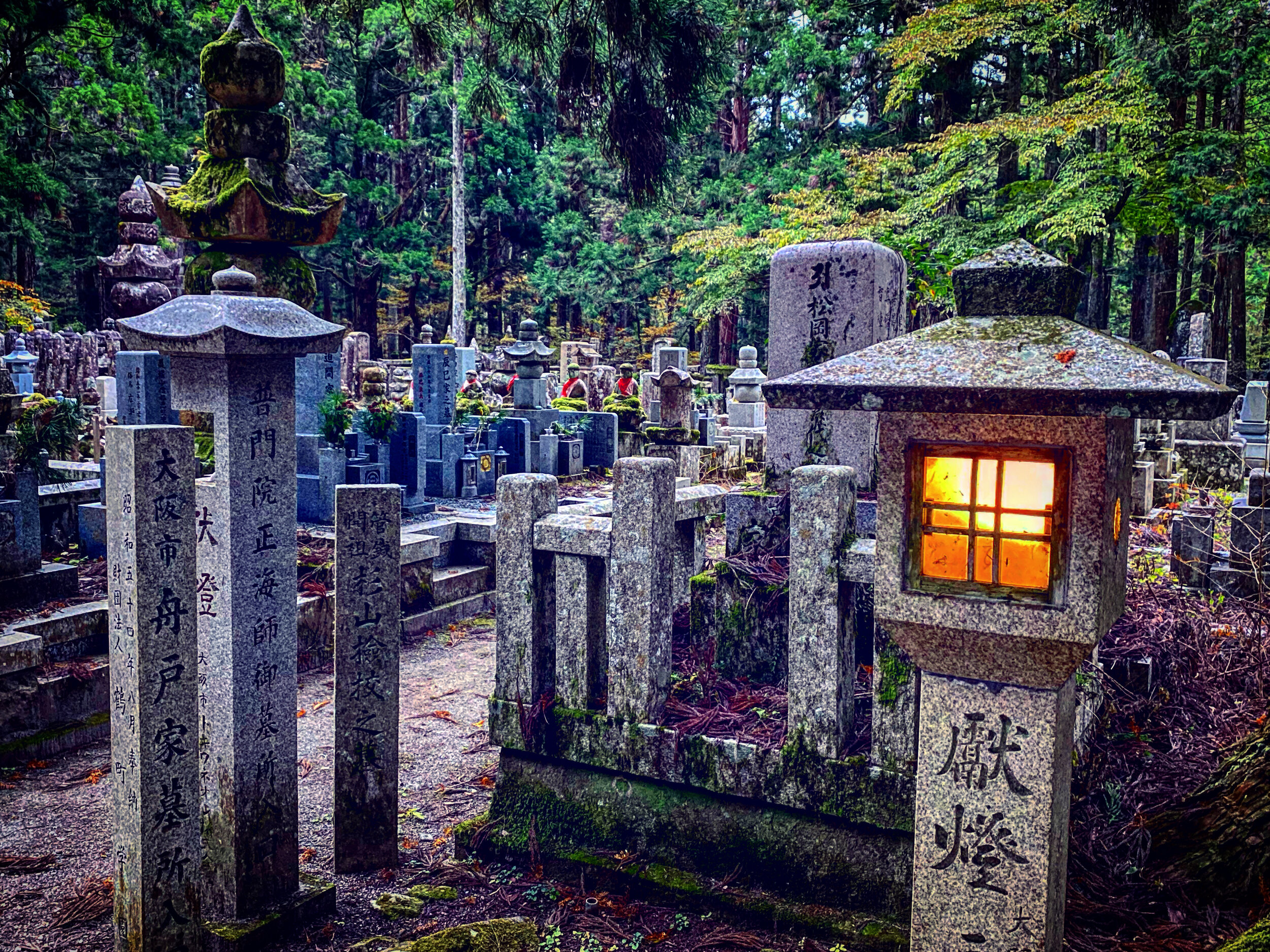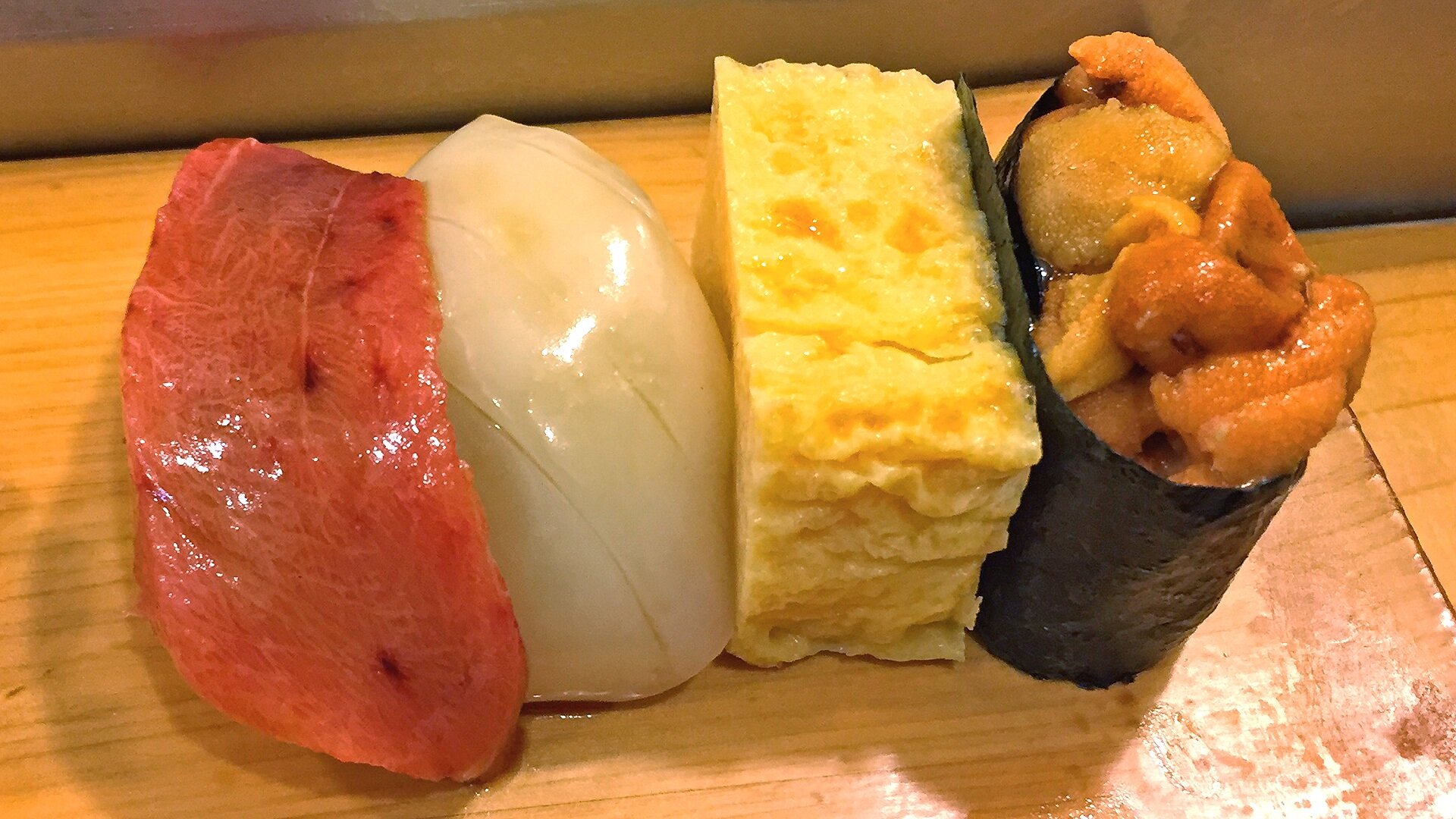This building in Naha, Okinawa displays some of the elements of traditional architecture. Notice the sliding shouji doors, tatami mats on the floor inside, the veranda (engawa), storm shutters, and the construction method that raises the entire building off of the ground.
Sapporo, Hokkaido Prefecture’s largest city and capital, as seen from the ferris wheel on top of NORBESA, a shopping complex in the Susukino District.
30. Cosplay Cafes and Animal Cafes
A souvenir photo that Jason received on his visit to Maidreamin, a maid cafe in Akihabara, Tokyo.
Cat Cafe Calico, a popular cat cafe in Shinjuku, Tokyo.
Japan is home to all sorts of interesting cafes, from cat cafes to maid cafes and beyond. Join Jason and Paul as they explore the many types of experiences you can have at Japanese cafes!
Okunoin, Japan’s largest cemetery, located in the temple town of Koyasan.
Aharen Beach on Tokashiki Island, Okinawa.
Gachapon Giveaway!
Some examples of gachapon that can be found in Japan. (These specific gachapon are not included in the giveaway.)
Sightseeing Japan is excited to announce the Gachapon Giveaway! The first ten listeners to review the podcast will receive a free gachapon! To enter, follow these two simple steps: (1) Submit a review of Sightseeing Japan to any podcast provider where the podcast is available. (2) Send an email to feedback [at] sightseeingjapanpodcast.com. Be sure to include (i) your review, (ii) the name of the podcast provider where you submitted your review, and (iii) your mailing address. That’s it!
A bamboo grove at Hiroshima’s Shukkeien Garden.
Kagami mochi, one of the many decorations traditionally displayed in the home for New Year.
A Christmas tree at a shopping mall in Hiroshima.
Decorative Japanese swords for sale at a shop in Kamakura. (Real functional swords are much more expensive)
An informational panel at the Kawagoe Festival Museum about matsuri floats.
Various types of sushi from Daiwa Sushi, a sushi bar at Tsukiji Market in Tokyo.
21. Sushi
Sushi is a popular Japanese dish that has spread throughout the world. Join Jason and Paul as they explore the delicious world of sushi!
Topics Covered:
What is Sushi?
History
Types: Makizushi — Nigirizushi — Chirashizushi — Inarizushi — Old Styles (Oshizushi/Hakozushi/Narezushi) — Uramaki
Ingredients: Sushimeshi (Rice) — Nori (Seaweed) — Toppings — Condiments
Presentation
Girls wearing yukata (a light summer kimono) and zori (a type of traditional footwear) at a temple in Kyoto.
20. Kimono
Kimono are traditional Japanese garments that can be worn for many different occasions and with many different types of related accessories. Join Jason and Paul as they explore the world of traditional Japanese fashion!
Topics Covered:
What is a Kimono?
History
How are Kimono Made?
Cost
How to Wear a Kimono
Variations: Yukata — Furisode — Iromuji — Mofuku — Junihitoe
Footwear and Accessories
The remains of a house that was washed away in the tsunami caused by the 2011 Touhoku Earthquake. (Photo taken in Ishinomaki in 2015)
Himeji Castle.
18. Castles
Japanese castles are strategic defensive fortresses, but they were also built to be visually striking and impressive. Join Jason and Paul as they explore the history, architecture, and defensive capabilities of Japanese castles!
Topics Covered:
History
Architecture: Location — Main Keep (Tenshukaku) — Walls/Moats/Baileys — Yagura (Guard Towers) — Gates
How to Attack a Japanese Castle
Visiting Castles Today
Strong Zero is a type of drink called chuuhai, which is a portmanteau of “shouchuu” and “highball”. Shouchuu is a Japanese distilled drink.
17. Alcohol
Drinking plays an important part in Japanese society. Join Jason and Paul as they explore the world of Japanese alcoholic beverages and drinking culture!
Topics Covered:
History
Drinking Culture: Konpa — Nomikai — Etiquette — Social Impact
Types of Beverages: Nihonshu (Sake) — Beer — Shochu — Chuhai — Umeshu — Wine — Whisky
Where to Drink
16. Ghosts and Monsters (Yurei and Yokai)
Paul in Shibuya on Halloween of 2016.
The crowd goes on forever!
Lots of nice costumes.
Police keeping an eye on things.
15. The Japanese Language
Did you know that the Japanese language uses three distinct writing systems? Join Jason and Paul as they explore the history and complexities of the Japanese language!
Topics Covered:
How is the Japanese Language Structured?
History
Writing Systems: Kanji — Hiragana — Katakana — Romaji
How to Learn Japanese
A row of vending machines in Ikebukuro, Tokyo.






















